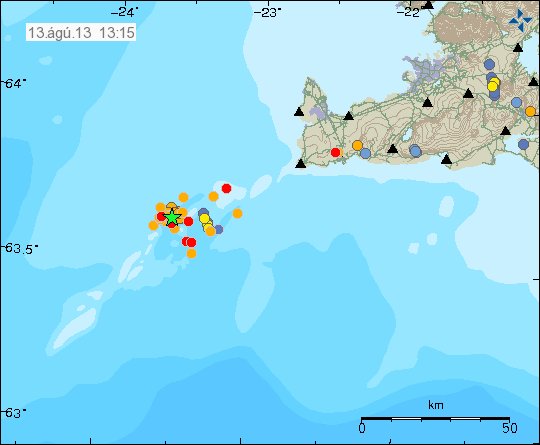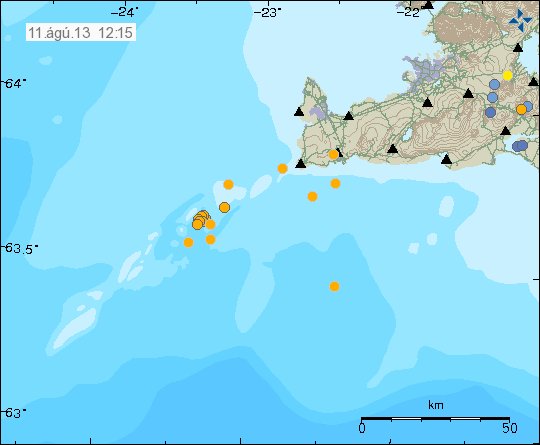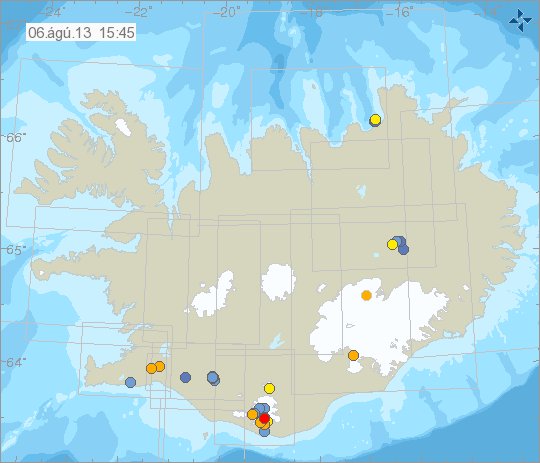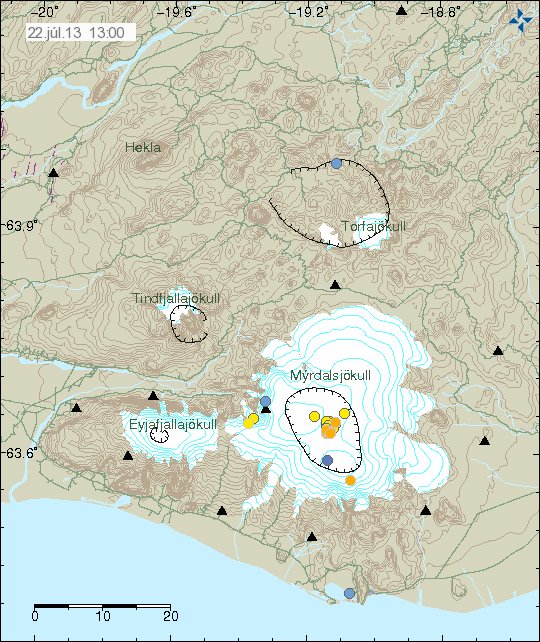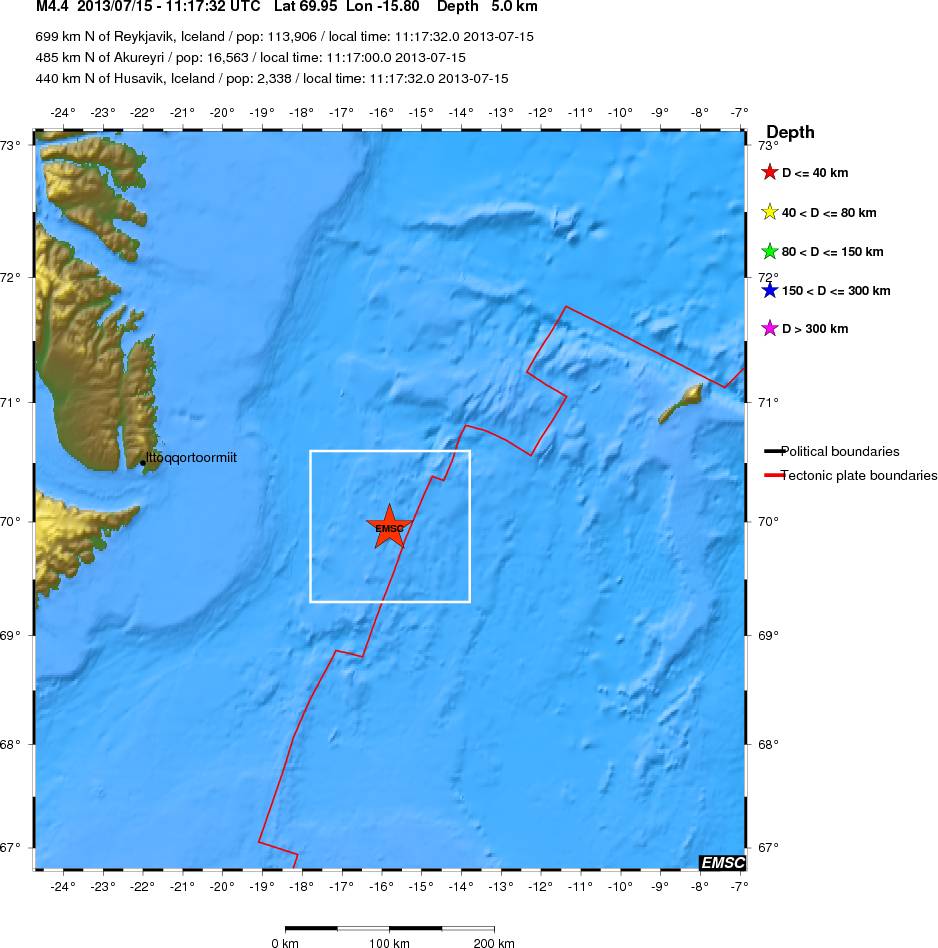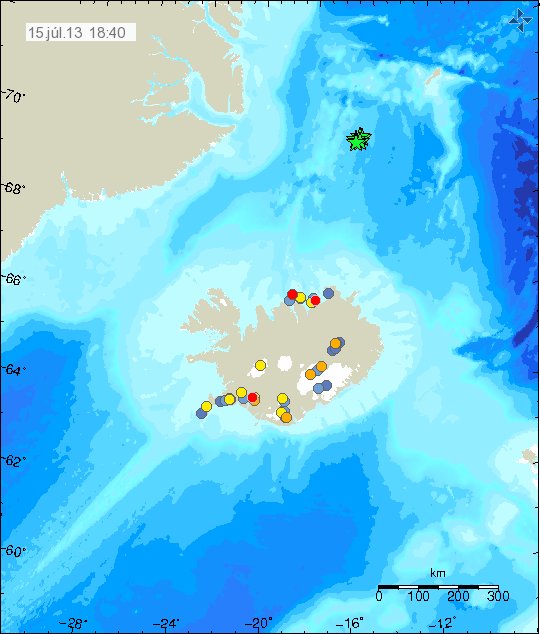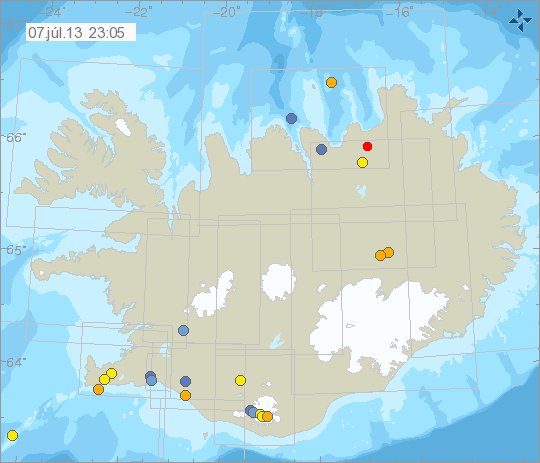In a announcement from Icelandic Meteorological Office, an minor glacier flood has now taking place from Kverkfjöll volcano, it appears to have started yesterday (15-August-2013). This is one of the minor glacier lakes in Kverkfjöll volcano. This glacier flood in minor and the water levels are not expected to reach more than normal summer level in the glacier river the flood is going into. The glacier river is called Volga and is a glacier river from Kverkfjöll volcano glacier area.
Currently Icelandic Meteorological Office is taking a trip over Kverkfjöll volcano to see the local changes and what is exactly is going on. Current status of the glacier flood is not well known, but latest report suggested that some subsiding was taking place, if that is because the glacier flood is over or something else is taking place I am not sure about at present time.
Update 1: Icelandic Civil Protection has confirmed that steam explosion took place in Kverkfjöll volcano following the glacier flood (due to sudden pressure release) that took place during the night and in the morning. News about that can be found here in Icelandic.
Web cameras of Kverkfjöll volcano
It is possible to view web cameras of Kverkfjöll volcano here. Weather information can be found here.
Icelandic news about this glacier flood
Óvenjulegur vöxtur í Volgu (mbl.is)
Hægt hefur á vexti hlaupsins (mbl.is)
Blog post updated at 20:47 UTC on 16-August-2013.
Blog post updated at 21:29 UTC on 16-August-2013.

